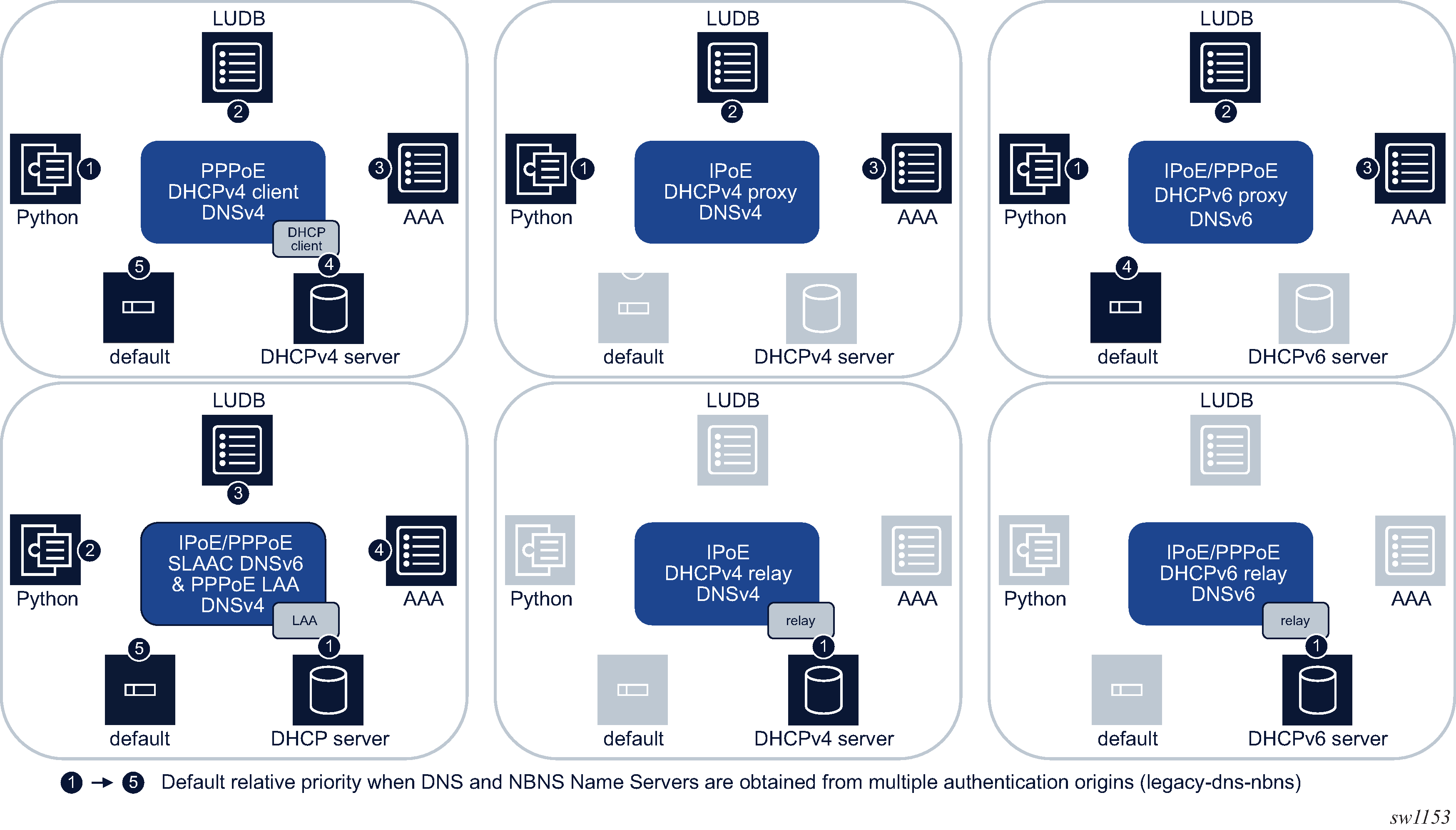Important changes occurred in the DNS and NBNS name server origin priorities in SR OS Release 21.7 which could result in different DNS and NBNS name server IP addresses being sent to a subscriber session after an upgrade, if the configurations of the DHCP and RADIUS servers are not simultaneously updated accordingly. To facilitate a smooth transition when the configuration of back-end systems cannot be changed at the time of the upgrade, the legacy behavior, which is backward compatible with SR OS Releases before 21.7 can be enabled using the following configuration:
configure subscriber-mgmt
system-behavior
legacy-dns-nbns

The following changes are enabled with the legacy-dns-nbns configuration:
supported authentication origins and their relative priorities for DNS and NBNS name servers as illustrated in Figure: Legacy DNS and NBNS name server authentication origins:
DHCPv4 and DHCPv6 relay
DNS and NBNS name servers can only be provided by the DHCP server
DHCPv4 proxy
default DNS and NBNS name servers configured at the subscriber interface are not considered
Local Address Assignment (LAA)
DNS and NBNS name servers obtained from local address assignment (DHCP server options) have the highest origin priority
mid-session changes for DNS and NBNS name servers at re-authentication as described in Changing DNS and NBNS name servers mid-session
a group-interface configured as DHCPv6 Relay inserts a DNS Recursive name server Option (23) in the DHCP Advertise and DHCP Reply message without checking the Option Request Option (6) in the client message
Mid-session changes for DNS and NBNS name servers using RADIUS CoA are enabled by default and are not disabled with the legacy-dns-nbns configuration.